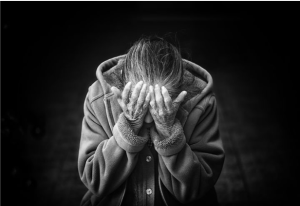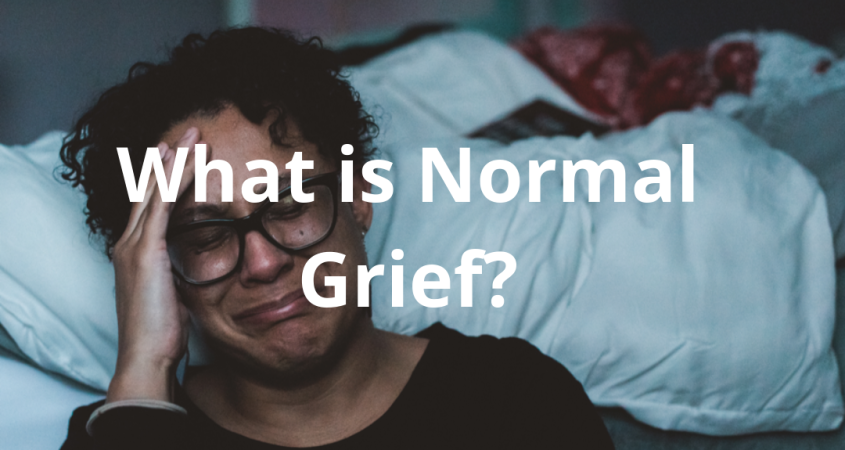What is Normal Grief?
I was recently asked the short and deceptively simple question – ‘What is normal grief?’ The answer should be equally short and simple. Not so I’m afraid. The question sits in the same basket as ‘how long is a piece of string?’ and ‘what does a mango taste like?’ Sorry folks. I’ll have to take the long way round to eventually arrive at the simple answer you may all be hoping for.
The Long Way Round
Let’s start by defining grief. Grief is the reaction we have when something we treasure is lost – innocence, trust, freedom, our home, country, job, reputation, respect, financial security, a family or community role, part of our body, ability, good health, and of course, the death of someone we love dearly. Our journey with grief begins with our birth. We lose the warm security of our mother’s womb and enter the potentially exciting external world. When life doesn’t live up to its promise, many folk long to rush back to that first experience of security without responsibility. According to Sigmund Freud et al, we curl up in the foetal position as an indication that we’re ready for the return journey. Thank goodness it isn’t possible! In her beautifully written doctoral dissertation titled ‘Many Little Dyings’, my colleague and friend Irene Renzenbrink, talks about the losses throughout life that shape what we eventually become. She bravely shares her own journey and those of others, who, like her, expressed and healed their grief through art. Somehow, like Irene, we all have to learn how to live with the bruises, disappointments, disillusionments and intense pain that life delivers. Art is one way, and there are many others. Malcolm Fraser, a former Australian Prime Minister, once famously said ‘life wasn’t meant to be easy’, and it certainly isn’t for most folk. Maybe they exist in some protected corner of the world, but I have yet to meet a person who hasn’t, at the very least, been bruised along the way. In my opinion, we should wear our battle scars proudly, without shame or embarrassment, as badges of honour, indications of our survivability, our resilience, our courage, our ability to live with the hand life deals us. The quality of the life we learn to live, scars and all, can be enhanced when we are fortunate enough to receive wise, and compassionate care in our times of need – but definitely not the kind of care that serves the needs of the carer and enhances THEIR self image as they damage ours.
What happens when we Grieve?
 Grief affects every part of our being – our body, mind, and soul – and it’s exhausting. Physically, we may experience nausea, appetite loss or gain, and aches and pains in whatever part of our body is most vulnerable or expressive. Mentally we may feel confused, have difficulty concentrating or remembering anything, and find ourselves going round in endless circles as we try to make sense of the event that has happened and our reactions to it. Spiritually, we may question the meaning of life, and the value of all our previous beliefs. We feel internally young and vulnerable, lose confidence in our ability, and have difficulty making decisions, or make instant decisions we later regret. Our hearing and eyesight can be affected, both literally and figuratively – the world as we knew it seems to have changed and everything looks and sounds different. Everything may seem what I call ‘too’ – that is, too loud, too bright, too fast, too slow – ‘too’ everything for us to process efficiently.
Grief affects every part of our being – our body, mind, and soul – and it’s exhausting. Physically, we may experience nausea, appetite loss or gain, and aches and pains in whatever part of our body is most vulnerable or expressive. Mentally we may feel confused, have difficulty concentrating or remembering anything, and find ourselves going round in endless circles as we try to make sense of the event that has happened and our reactions to it. Spiritually, we may question the meaning of life, and the value of all our previous beliefs. We feel internally young and vulnerable, lose confidence in our ability, and have difficulty making decisions, or make instant decisions we later regret. Our hearing and eyesight can be affected, both literally and figuratively – the world as we knew it seems to have changed and everything looks and sounds different. Everything may seem what I call ‘too’ – that is, too loud, too bright, too fast, too slow – ‘too’ everything for us to process efficiently.
How long do these changes last?
Initially 24 hours a day, seven days a week, making us feel as if grief controls us. Slowly, in a safe environment, with the right support, we learn to understand our reactions and ways to manage them so that we feel more in control. When we are ill, overtired, or stressed, these ‘symptoms’ tend to return – one of the lifelong ‘scars’ left by grief, especially if the significant loss or trauma occurs when we are very young.
What will others see of our Grief?
 The way we express our grief outwardly will be determined by our gender, culture, personality, beliefs, family modelling, and mental and physical health. We tend to become an exaggerated version of our former selves. What that means is that if we were someone who was always busy, and had trouble staying still, we are likely to make ourselves even more busy; if we were problem solvers we are likely to try to identify problems we can solve; if we were people who cried easily we are likely to weep buckets, or seem very contained if we previously had difficulty crying. People who tucked themselves away in solitary spots when distressed are likely to do so even more now; others may be constantly on the phone, out partying, or glued to a computer screen. Some will play even more sport or try to work out their grief at the gym; others will use sex to ease pain and loneliness.
The way we express our grief outwardly will be determined by our gender, culture, personality, beliefs, family modelling, and mental and physical health. We tend to become an exaggerated version of our former selves. What that means is that if we were someone who was always busy, and had trouble staying still, we are likely to make ourselves even more busy; if we were problem solvers we are likely to try to identify problems we can solve; if we were people who cried easily we are likely to weep buckets, or seem very contained if we previously had difficulty crying. People who tucked themselves away in solitary spots when distressed are likely to do so even more now; others may be constantly on the phone, out partying, or glued to a computer screen. Some will play even more sport or try to work out their grief at the gym; others will use sex to ease pain and loneliness.
Is there a right way to Grieve?
Anyone who has felt censured by others when they are grieving may be left feeling as if there is a ‘right way to grieve’, and they’ve somehow got it wrong. The truth is, we really can’t get it right in other people’s eyes no matter what we do. If we cry, we’re likely to be told to pull ourselves together, put it all behind us, and get on with life. If we don’t show outward emotion, we’re judged as being cold and hard. Our language is full of controlling platitudes that make us want to puke or punch people. For example, buck up, think of the kids, every cloud has a silver lining, you’re young – you can get married again, have another baby; anyway, you wouldn’t want them to suffer; he/she had a good innings, and so on. My husband does a great imitation of the folk who deliver these unwelcome pronouncements! There is no right or wrong, unless our behaviour is harmful to ourselves or others. Many people find themselves drinking more alcohol, smoking more, drinking more tea or coffee, taking more pain killers, tranquillisers, sleeping tablets, or upping the anti-depressants. Understandable, but not a good idea in the long term. Eventually, we all have to learn how to live with grief, no matter how painful the process. We can temporarily suppress or try to mask it, but it will eventually re-surface, as if it has a life and time frame of its own.
Back to the Beginning – What is Normal Grief?
First, tell me about YOUR piece of string; the way YOU imagine a mango might taste. Then I can answer your question. ‘Normal’ can only be determined in the context of our whole life. What is normal grief for me might be abnormal for you. My piece of string is not your piece of string. If someone I am counselling asks me that question about themselves, my response will always be a version of “To answer that question I need to really know who you are, to understand your life’s journey to this point. Let’s go back to the beginning. Tell me about growing up in your family.” And so on. When I REALLY know someone, I can then assure them “your grief is an expression of all that you are, all that you’ve experienced – so I can truthfully assure you that what you’re feeling and expressing now is absolutely normal.” Reassurance about normality from someone who doesn’t really know us doesn’t help. To be effective, reassurance has to have what I call a ‘receptor site’ – a receptor site opened up by the genuineness of another’s understanding, of their knowing us, of their ability to imagine walking in our shoes.
Helpful Answers
For some, reassurance and helpful answers might be best obtained from reading books such as ‘Coping With Grief’, ‘Coping With Grief After Suicide’, and ‘The Grief of Our Children’ – all available from https://childhoodgrief.org.au/resources/
Help
Help is always available – at ‘A Friend’s Place’ or by contacting our outreach service.
Dianne McKissock OAM
NCCG Outreach Support Service Email support for dying and bereaved people and anyone involved in their care







